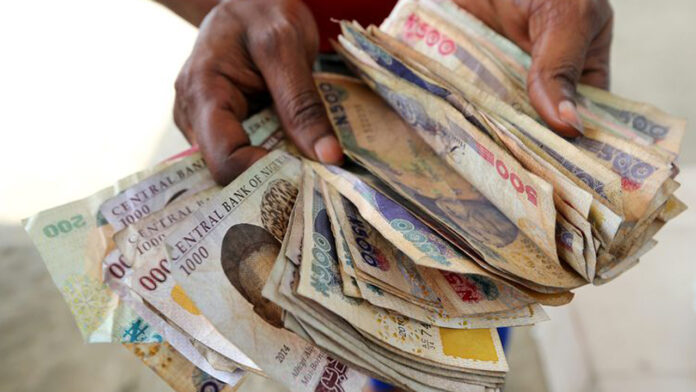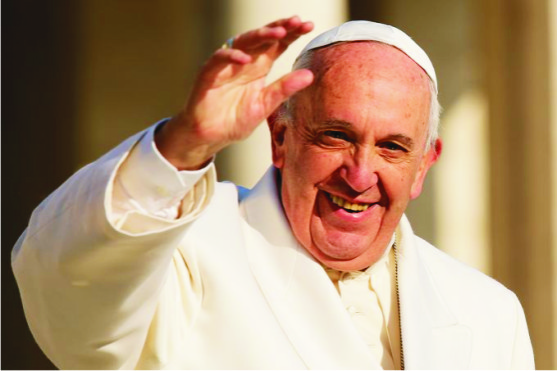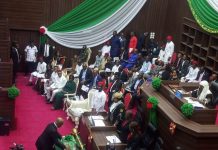The not-so-new COVID-19 pandemic has certainly taken a serious toll on just about any national economy on the globe. The GDP growth projections all over the world are well within negative rates, and it’ll take quite some time for the trend to reverse.
In Nigeria, this trend is certainly visible. Given how closely the country’s economy is tied to foreign exports of oil, coffee beans, and whatnot, it’s not surprising that the national currency, as well as the economy as a whole, are undergoing a serious economic crisis and are expected to remain in the same position for a long time.
According to Goldman Sachs Group’s, the world’s leading global investment banking company, the Nigerian naira is expected to depreciate from the current rate of around N407/$1 all the way to N500-550/$1 in the next 12 to 18 months.
This report is crucial in a number of ways, among which one of the most important implications is that this news will significantly affect how Forex bears and bulls – i.e.buyers and sellers of currencies – interact with not only naira but other currencies as well.
That’s because Nigerian traders mainly prefer trading based on Forex news reports and coverages rather than technical analysis. In fact, this is one of the most popular strategies used by Forex traders worldwide.
Therefore, saying the national currency will depreciate quite a bit is definitely going to strengthen the bears while dealing a huge blow to the bulls; especially if it comes to a respectable source, such as Goldman Sachs.
The Nigerian economy in a heavy crisis
As noted above, the outbreak of Coronavirus has taken the world economy to its knees. After the Spanish Flu in 1918, this is the first major humanitarian crisis that has affected the entire globe, killing over 700,000 people and affecting over 20 million worldwide.
In order to stop the rapid spread of the virus, world governments started introducing various lockdown measures. For instance, in almost all countries globally, non-essential production sites and workplaces completely stopped their operations, leaving lots of people without the only source of income. This obviously led to the slowing down of economic growth in almost all countries across the globe, which is -4.9% on average.
When it comes to Nigeria, the country has also encountered dire economic conditions. According to the same projections from the International Monetary Fund (IMF), the GDP growth rate is projected to be even lower than the global one – -5.4% in 2020. And among lots of underlying causes, there’s the curbing of international trade and travel.
The Nigerian economy greatly depends on the foreign exports of its oil, cocoa, coffee, and other natural resources. Granted, it’s not the most sustainable structure of the economy and only the developing countries are dependent solely on commodities exports, it’s still the primary source of income for the country. Therefore, declining prices mean that the international reserves are decreasing as well.
To demonstrate this, let’s take a look at what happened to the oil prices before, during, and after the pandemic became our reality. So, before all of this craze about COVID-19 and its deadly effects, one barrel of oil was selling at around 62 US dollars. During the mid-pandemic, in April, the price went down at a whopping rate to reach -37 USD. As for right now, one barrel of oil sells at 42 USD.
As you can see, the price of oil has undergone quite a frenzy change. And it goes without saying that for a country whose economy directly depends on oil prices, this development would certainly bring its economy to the knees.
Challenges in Nigeria’s Forex market
And according to Goldman Sachs, that’s to be expected during the next 12 to 18 months. In an exclusive report published on Bloomberg, the leading investment banking firm predicts that in order to reach the desired monetary balance, the next 12 to 18 months will see Nigeria’s naira to reach “an exchange rate of 500-550 per dollar,” instead of today’s N407/$1.
But what is that monetary balance that Goldman Sachs is mentioning here? According to the Nairaametrics report published on 9 August, the various exchange sites have quite different exchange rates for the national currency.
For example, the official exchange rate put forward by the Central Bank of Nigeria sells naira at N380/$1 right now. However, at the NAFEX exchange market, that number is at around N390/$1. At SMIS, the exchange rate is N380/$1 and at the BDC segment, it’s at N447/$1. As for the parallel market exchange, one US dollar can buy N475.
As you can see, there’s quite a significant discrepancy between the numbers of different exchange sites. And the Central Bank of Nigeria is trying to adjust its official exchange rate, so that all the other numbers are somewhat in sync with it, ultimately depreciating naira even further.
Another factor to keep in mind is dwindling demand on foreign exchange within the Nigerian Forex market. According to the Nairaametrics report published last month, the Nigerian foreign exchange market posted just $937 million capital flow in July, whereas in June, that number was at $875 million.
For one thing, analysts believe that a huge chunk of demand for Forex, around 1.5 to 5 billion US dollars, is pent-up in a form of investments and other foreign funds that are expected to flow out of the country very soon.
But more importantly, the decrease in demand and the CBN’s striving to further depreciate naira is a direct result of the economic slowdown caused by the COVID-19 pandemic measures. There’s also the lack of capital supply across the above-mentioned exchange sites, be it BDC, SMIS, etc. As the world is reluctant to engage in international economic activities once again, developing countries are having a hard time attracting foreign investors and crucial financial capital for their economies.
What this means is that the foreign currency reserves are very low and dwindling even, while the Nigerian Forex market is experiencing a lack in both supply and demand. That’s why the Central Bank of Nigeria is trying to artificially depreciate the national currency and keep it in balance with other exchange sites.
But there is a possibility that the CBN won’t need to implement such hawkish monetary strategies. It all depends on when the world realizes that we crave for resuscitated international trade and foreign investments. If that happens soon, then European and Asian production sites will open up as well, driving the demand for Nigerian exports up once more. But if not, then heavy devaluation measures are to be expected in the next 12 to 18 months.











